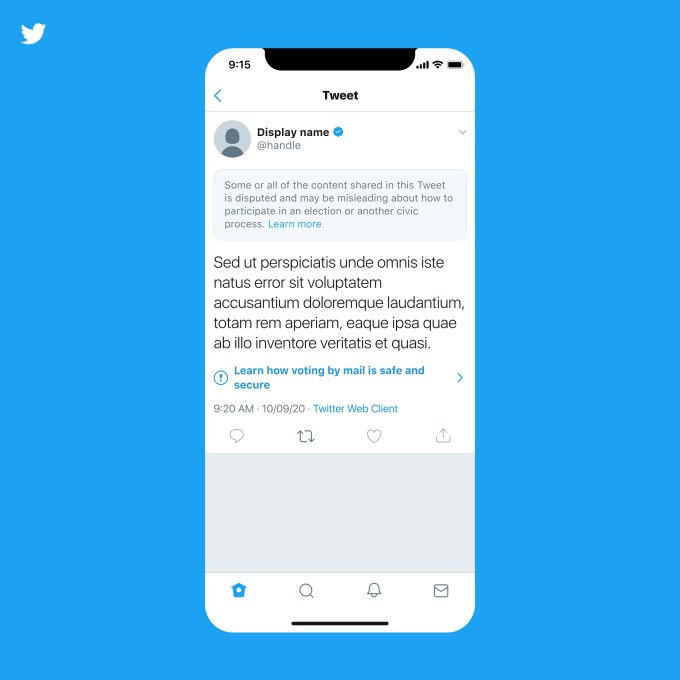NEWS
Changing how retweets work, Twitter seeks to slow down election misinformation

Twitter announced Friday a major set of changes to the way its platform would work as the social network braces for the most contentious, uncertain and potentially high-stakes election in modern U.S. history.
In what will likely be the most noticeable change, Twitter will try a new tactic to discourage users from retweeting posts without adding their own commentary. Starting on October 20 in a “global” change, the platform will prompt anyone who goes to retweet something to share a quote tweet instead. The change will stay in place through the “end of election week,” when Twitter will decide if the change needs to stick around for longer.

Gif via Twitter
“Though this adds some extra friction for those who simply want to Retweet, we hope it will encourage everyone to not only consider why they are amplifying a Tweet, but also increase the likelihood that people add their own thoughts, reactions and perspectives to the conversation,” Twitter said of the change, which some users may see on Twitter for the web starting on Friday.
Twitter has in recent months been experimenting with changes that add friction to the platform. Last month, the company announced that it would roll out a test feature prompting users to click through a link before retweeting it to the platform at large. The change marks a major shift in thinking for social platforms, which grew aggressively by prioritizing engagement above all other measures.
The company also clarified its policy on election results, and now a candidate for office “may not claim an election win before it is authoritatively called.” Twitter will look to state election officials or projected results from at least two national news sources to make that determination.
Twitter stopped short of saying it will remove those posts, but said that it will add to any content claiming premature victory a misleading information label pointing users toward its hub for vetted election information. The company does plan to remove any tweets “meant to incite interference with the election process or with the implementation of election results,” including ones that incite violence.
Next week, Twitter will also implement new restrictions on misleading tweets it labels, showing users a pop-up prompt linking to credible information when they go to view the tweet. Twitter applies these labels to tweets that spread misinformation about COVID-19, elections and voting, and anything that contains manipulated media, like deepfakes or otherwise misleading edited videos.
The company will also take additional measures against misleading tweets that get a label when they’re from a U.S. political figure, candidate or campaign. To see a tweet with one of its labels, a user will have to tap through a warning. Labeled tweets will have likes, normal retweets and replies disabled.
These new measures will also apply to labeled tweets from anyone with more than 100,000 followers or tweets that are getting viral traction. “We expect this will further reduce the visibility of misleading information, and will encourage people to reconsider if they want to amplify these Tweets,” Twitter said in its announcement.

Image via Twitter
Twitter will also turn off recommendations in the timeline in an effort to “slow down” how fast tweets can reach people from accounts they don’t follow. The company calls the decision a “worthwhile sacrifice to encourage more thoughtful and explicit amplification.” The company will also only allow trending content that comes with additional context to show up in the “for you” recommendation tab in an effort to slow the spread of misinformation.
The company acknowledges that it plays a “critical role” in protecting the U.S. election, adding that it had staffed up dedicated teams to monitoring the platform and “respond rapidly” on election night and in the potentially uncertain period of time until authoritative election results are clear.
TechCrunch



















